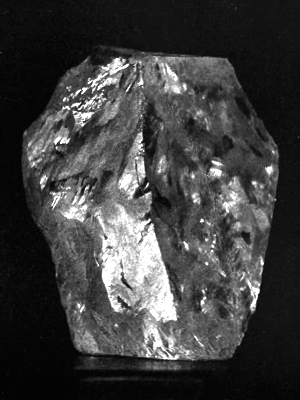
Scientists from the Institute of Geology and Mineralogy (IGM) carried out a study of the transformations that occur jointly in garnet and diamond when interacting with carbon dioxide and hydrocarbon dioxide fluids in the presence of carbon in conditions similar to those of the Earth’s mantle. . has the name of. VS Sobolev SB RAS, November 27 reports the website of the Decade of Science and Technology in Russia.
Garnet is widely distributed in the Earth’s mantle. Its variety, the pirope, is considered a constant “companion” of the diamond, which is why it is used as an indicator in searching for diamond deposits.
The experiments of Novosibirsk geologists confirmed the hypothesis that diamonds and garnets can grow together. In nature, these processes occur at temperatures and pressures existing at depths of about 200 kilometers, during the interaction of garnet with carbon dioxide and carbon-containing hydrocarbon dioxide fluids (liquids) present in the Earth’s mantle.
Previous studies have shown the important role of these liquids in the formation of diamonds.
Scientists of the Institute of Geology and Mineralogy SB RAS in their experiment established the average growth rate of diamonds in such conditions, which, depending on the temperature, ranged from 0.013 to 0.8 micrometers per hour. This means that to “naturally” grow a one carat (0.2 gram) diamond it takes 4.5 months to 17.5 years.
The researchers simulated the conditions of the Earth’s mantle using a high-pressure “sliced sphere” apparatus. It provided a pressure approximately 65 thousand times greater than atmospheric pressure, which exists at a depth of about 200 kilometers, and a temperature of 950 to 1550 °C.
Samples of garnet, 0.5 mm diamond crystals, carbon in the form of graphite and silver oxalate or oxalic acid were placed in the installation; With the help of the latter, carbon dioxide and water-carbon dioxide fluids are created in laboratory conditions.
After four days of the experiment, the structure and chemical composition of the resulting crystals were analyzed. It turned out that the fluids changed the chemical composition of the surface layers of the garnet, reducing its content of magnesium and calcium oxides, which were replaced by inclusions of fluid carbon dioxide, carbonates, fused carbonate-silicates and graphite.
In this case, high pressure and temperature led to the fact that carbon atoms dissolved in the liquid formed a new layer on the diamond crystals.
Diamonds in the presence of garnet grew thanks to the fluid at a rate of 0.013 to 0.8 micrometers per hour, depending on the temperature. Thus, in nature, the formation of a diamond weighing one carat would take from 4.5 months at a temperature of 1550 °C to 17.5 years at 1150 °C, and to grow a “Cullinan” (3106.75 carats or 621.35 grams), it would take 56 to 3000 years.
The project director, head of the laboratory of experimental mineralogy and crystallogenesis of the Institute of Geology and Mineralogy of the Russian Academy of Sciences, doctor of geological and mineralogical sciences, corresponding member of the Russian Academy of Sciences, spoke about the importance of the research , Yuri Palyanov:
“The results obtained allow us to better understand the conditions under which diamondiferous rocks are formed and the possible role of garnet in diamond crystallization processes. “Our data can also be used to build modern models of natural diamond formation.”.
Scientists plan to conduct research to identify the connection between diamond growth conditions and their properties in order to use the patterns found to reconstruct diamond formation processes in nature.
The results of the study were presented in the article “Experimental study of the interaction of Paragenese eclogite and lherzolite garnets with H₂O-CO₂ fluid in RT parameters of the lithospheric mantle”, published in the journal Lithos and in the article “Experimental modeling of the Interaction of Paragenese mantle garnets with CO₂ fluid at 6.3 GPa and 950-1550 °C”, published in the journal “Geology and Geophysics”.
Source: Rossa Primavera
I am Michael Melvin, an experienced news writer with a passion for uncovering stories and bringing them to the public. I have been working in the news industry for over five years now, and my work has been published on multiple websites. As an author at 24 News Reporters, I cover world section of current events stories that are both informative and captivating to read.
